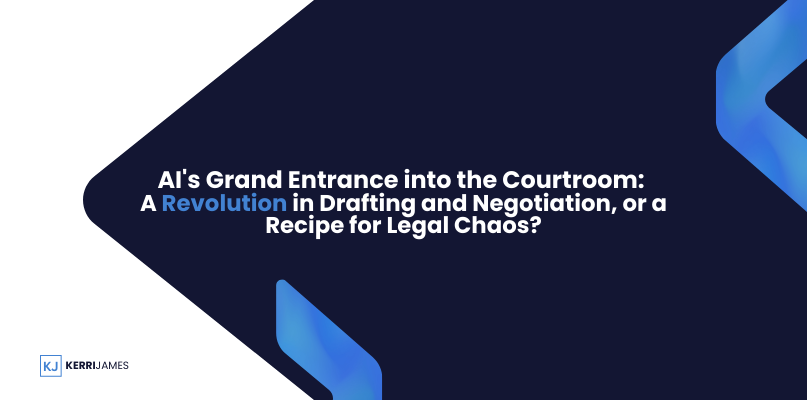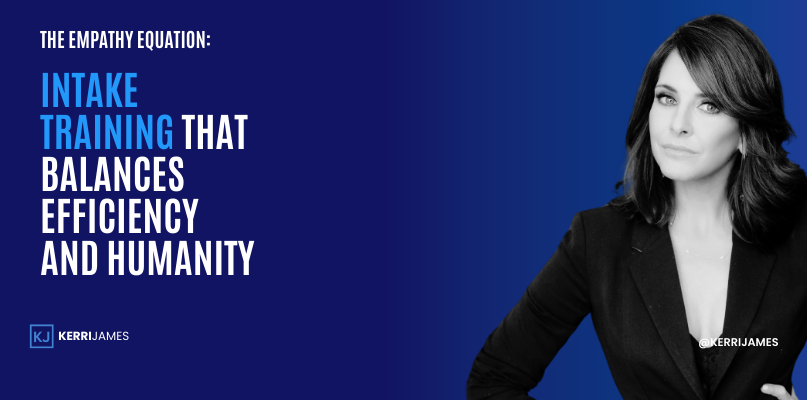The legal profession, with its reverence for precedent and tradition, has always danced cautiously around the edges of technological disruption. Yet, here we are, on the precipice of a seismic shift. Remember the first time you used legal research software and thought, “Well, there goes my weekend of flipping through dusty law books”? Fast forward to today, and we’re no longer just talking about simplifying research. We’re talking about Artificial Intelligence (AI) drafting airtight contracts, predicting the other side’s next move in a negotiation, and perhaps even whispering legal strategies in a lawyer’s ear.
It’s exhilarating, a bit unnerving, and undeniably the future knocking at our door. But before we fling open the doors and welcome AI into the hallowed halls of law with open arms, let’s, as any seasoned lawyer would do, examine both sides of the argument with a healthy dose of skepticism and a keen eye for detail.
AI: The Legal Eagle in the Making?
The allure of AI in law is undeniable. It’s not just about automating tedious tasks; it’s about augmenting human capabilities and achieving a level of legal prowess that was once the stuff of science fiction. Imagine a world where:
Contract Drafting Becomes a Breeze:
Picture this: You’re facing a mountain of contracts, each one a labyrinthine maze of clauses and legalese. In the past, this would have meant countless hours of painstaking review, redlining, and revisions. But with AI-powered drafting tools, this tedious process transforms into a streamlined symphony of efficiency.
Input the key elements of your contract – the parties involved, the subject matter, any special conditions – and let AI work its magic. Within moments, you have a solid first draft, complete with all the necessary clauses, industry-standard language, and even optional provisions tailored to your specific needs. Instead of getting bogged down in the minutiae of drafting, you’re free to focus on strategy, negotiation, and ensuring your client’s interests are protected.
But it gets even better. Imagine AI tools that can:
- Learn Your Style: Analyze your past contracts to identify your preferred language, clauses, and drafting conventions, creating drafts that mirror your unique style and approach.
- Compare and Contrast: Instantly compare your draft to thousands of similar contracts, identifying potential inconsistencies, areas for improvement, and even suggesting alternative language based on industry best practices.
- Generate Customized Explanations: Provide plain-language explanations of complex legal concepts within the contract itself, making it easier for your clients to understand the terms and conditions they’re agreeing to.
Risk Assessment Becomes Crystal Clear:
We’ve all experienced that sinking feeling when reviewing a contract – the nagging suspicion that something isn’t quite right, that there’s a hidden clause or a potential loophole lurking somewhere in the dense legalese. AI, with its superhuman ability to process vast amounts of data, can alleviate this anxiety by acting as a tireless watchdog, meticulously scanning contracts for:
- Inconsistencies: Identifying any discrepancies or contradictions within the contract itself.
- Missing Clauses: Flagging any essential provisions that are absent, ensuring your contract is comprehensive and leaves no room for misinterpretation.
- Unfavorable Terms: Highlighting any clauses that could potentially put your client at a disadvantage, giving you the opportunity to renegotiate or seek alternative solutions.
Think of it as having a second set of eyes, but these eyes have X-ray vision, capable of seeing through the complexities of legal language to reveal the underlying risks and opportunities. And imagine AI evolving to assess risks not just within the four corners of a document but also in the broader context of:
- Market Trends: Analyzing market data and industry trends to assess the long-term viability of a deal and identify potential risks or opportunities that might not be immediately apparent.
- Regulatory Changes: Staying abreast of evolving laws and regulations, alerting you to any potential compliance issues or changes that could impact the enforceability of a contract.
- Litigation History: Researching past legal cases and court rulings related to similar contracts or business arrangements, providing valuable insights into potential legal challenges and the likelihood of success in court.
Negotiations Get a Data-Driven Boost:
The outcome of a negotiation often hinges on understanding your opponent’s motivations, their priorities, and their willingness to compromise. In the past, this relied heavily on intuition, experience, and perhaps a bit of educated guesswork. But AI is ushering in a new era of data-driven negotiation, providing insights that can give you a distinct advantage at the bargaining table.
Imagine having access to an AI-powered analysis of your opponent’s past negotiation styles, their preferred terms in similar deals, even their public statements and social media activity related to the issues at hand. This information, often hidden in plain sight, can reveal invaluable insights into:
- Their Negotiation DNA: Do they tend to be aggressive or conciliatory? Do they prioritize speed or getting the best possible deal? Understanding their typical approach allows you to anticipate their moves and tailor your strategy accordingly.
- Their Hidden Agendas: What are their non-negotiables? What are they willing to compromise on? Identifying their pressure points and potential areas of flexibility empowers you to craft win-win solutions that satisfy both parties’ interests.
- Their Emotional Temperature: While AI can’t read minds (yet!), it can analyze language patterns and sentiment to gauge their emotional state, providing valuable clues about their receptiveness to certain offers or tactics.
Beyond analysis, AI could even become a real-time negotiation assistant, capable of:
- Suggesting Optimal Responses: Analyzing the ongoing conversation and suggesting persuasive arguments, counteroffers, or concessions that align with your overall strategy.
- Predicting Outcomes: Running simulations of various negotiation scenarios to predict the likely outcome of different approaches, allowing you to make data-driven decisions.
- Drafting Agreements On-the-Fly: Instantly generating legally sound language to reflect the agreed-upon terms, ensuring clarity and accuracy even in the heat of a negotiation.
The Human Element: The Heart of Law in an AI-Driven World
As impressive as these technological advancements are, it’s crucial to remember that law is ultimately a human endeavor, deeply intertwined with principles of fairness, justice, and the pursuit of a more equitable society. While AI can undoubtedly enhance our capabilities, we must proceed with caution, recognizing its limitations and ensuring that it complements, rather than replaces, the essential human elements of legal practice.
The Art of Persuasion and Understanding:
No matter how sophisticated AI becomes, it’s unlikely to replicate the nuanced understanding of human emotions that lies at the heart of effective legal representation. Negotiation, in particular, is as much about psychology as it is about legal strategy. It requires:
- Empathy: The ability to understand and relate to the emotions and perspectives of all parties involved, even in the midst of contentious disputes.
- Intuition: The ability to read between the lines, sensing unspoken motivations and anticipating reactions that data alone can’t always reveal.
- Creativity: The ability to think outside the box, crafting innovative solutions that address the underlying needs and interests of everyone involved.
The Perils of Bias:
AI systems learn from the data they’re fed. If that data reflects existing biases in the legal system – and let’s be honest, it often does – those biases will be perpetuated and even amplified, leading to unfair and unjust outcomes.
Imagine an AI tool trained on a dataset of past criminal sentencing decisions. If that data reflects racial disparities in sentencing (as we know it often does), the AI may inadvertently recommend harsher sentences for individuals of color, even when controlling for other factors.
Combating bias in AI requires a multi-faceted approach:
- Diverse Data Sets: Training AI on data that is representative of the population it will be used on, ensuring that it doesn’t perpetuate existing inequalities.
- Algorithm Audits: Regularly auditing AI algorithms to identify and correct for any biases that may emerge, ensuring that they’re making fair and impartial decisions.
- Human Oversight: Maintaining human oversight throughout the AI development and deployment process, ensuring that ethical considerations are paramount and that AI tools are used responsibly and equitably.
The Question of Accountability:
In a world where AI plays an increasingly prominent role in legal proceedings, the question of accountability takes on paramount importance. If an AI-drafted contract leads to an unfavorable outcome, who’s ultimately responsible? The lawyer who relied on technology? The software developer who created it? Or does the buck stop with the AI itself?
Establishing clear lines of accountability is crucial for maintaining public trust in the legal system and ensuring that AI is used ethically and responsibly. This requires a collaborative approach, involving:
- Legal Professionals: Lawyers have a responsibility to understand the limitations of AI tools and to use them ethically, always prioritizing their clients’ best interests and ensuring that AI is not a substitute for sound legal judgment.
- Software Developers: AI developers have a responsibility to create transparent and accountable systems, providing clear documentation about how their algorithms work, the data they’re trained on, and any potential limitations or biases.
- Regulators: Lawmakers and regulatory bodies must establish clear guidelines and standards for the development and use of AI in legal practice, ensuring that it aligns with ethical principles and promotes access to justice.
The Future of Law: A Collaborative Approach
The legal profession stands at a crossroads. We can cling to the old ways, viewing AI with suspicion and fear, or we can embrace the opportunities it presents, forging a new path where technology and human ingenuity work in harmony to create a more just and equitable legal system.
This isn’t about replacing lawyers with AI; it’s about empowering lawyers with AI. It’s about freeing them from the shackles of tedious tasks and unleashing their full potential as legal strategists, creative problem-solvers, and passionate advocates for justice.
Imagine a world where:
Lawyers Become Legal Architects:
Instead of spending countless hours drafting boilerplate clauses, lawyers can focus on crafting innovative legal strategies, anticipating potential challenges, and ensuring their clients’ interests are protected in a rapidly evolving legal landscape. They become architects, designing comprehensive legal solutions that encompass not just the letter of the law but also the spirit of fairness and equity.
AI Becomes the Ultimate Legal Assistant:
AI can handle the time-consuming tasks, from legal research to document review to initial drafting, freeing up lawyers to focus on client interaction, strategic thinking, and the finer points of negotiation and litigation. It becomes an indispensable tool, augmenting their capabilities and allowing them to achieve better outcomes for their clients.
Final Words
As we integrate AI into the legal profession, we must prioritize ethical considerations, addressing issues of bias, transparency, and accountability to ensure that technology serves justice, not undermines it. This requires ongoing dialogue and collaboration between legal professionals, AI developers, and regulatory bodies, ensuring that we’re using this powerful technology responsibly and for the betterment of society.
The legal profession has always been about interpreting and applying the law to complex human situations. As AI enters the equation, that fundamental role doesn’t change; it evolves. We have a responsibility to ensure that AI tools are used ethically, responsibly, and in a way that upholds the integrity and fairness of the legal system.
This is not just about keeping up with the times; it’s about shaping the future of law in a way that benefits everyone. It’s about ensuring that technology, rather than replacing human judgment, enhances it, allowing us to deliver even better outcomes for our clients and build a more just and equitable legal system for all.










